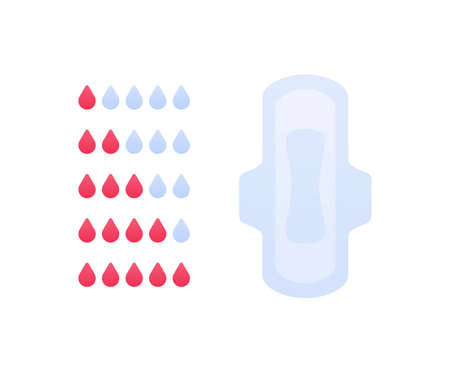Introduction to Age-Related Volume Loss
The process of facial ageing is a complex interplay of intrinsic and extrinsic factors, resulting in gradual yet noticeable changes in appearance over time. One of the most significant contributors to this transformation is age-related volume loss, which primarily affects the mid-face, cheeks, temples, and jawline. As collagen production declines and subcutaneous fat diminishes with advancing years, the face can lose its youthful contours, leading to hollowing, sagging, and the deepening of lines and folds. In the context of the UK population, these changes are often exacerbated by environmental influences such as variable weather conditions and lower levels of sunlight exposure, both of which can impact skin health and elasticity. The cumulative effect is a less vibrant, more tired appearance that may not reflect an individuals energy or spirit. For many people across Britain, maintaining natural-looking facial volume has become increasingly important—not only for aesthetic reasons but also for supporting self-confidence in social and professional settings. Understanding the mechanisms behind age-related volume loss is therefore critical in identifying effective interventions that align with contemporary British preferences for subtlety and authenticity in facial rejuvenation.
Understanding Collagen Stimulators
Collagen stimulators have emerged as a game-changing innovation in the field of non-surgical facial rejuvenation, particularly for those seeking to address age-related volume loss. Unlike traditional dermal fillers that provide immediate but temporary results by physically filling lines or hollows, collagen stimulators work by activating the skin’s natural regenerative processes. This approach offers a more gradual, natural-looking improvement, which is increasingly preferred among discerning patients in the UK who value subtlety and longevity in aesthetic treatments.
What Are Collagen Stimulators?
Collagen stimulators are injectable substances designed to encourage your own body to produce collagen—a key structural protein responsible for skin firmness and volume. As we age, our collagen production declines significantly, leading to sagging skin and loss of facial contours. Collagen stimulators help reverse this process by stimulating fibroblast activity, promoting new collagen synthesis over several months.
How Do Collagen Stimulators Work?
The treatment involves injecting biocompatible materials such as poly-L-lactic acid (PLLA) or calcium hydroxylapatite into targeted areas beneath the skin. These compounds act as scaffolds, prompting a controlled inflammatory response that activates collagen-producing cells. Over time, the body gradually absorbs the injectable material, leaving behind newly-formed collagen for sustained volumising effects. The full benefits typically become visible after several weeks to months and can last up to two years or more, depending on individual factors and product choice.
Key Differences: Collagen Stimulators vs Traditional Dermal Fillers
| Collagen Stimulators | Traditional Dermal Fillers | |
|---|---|---|
| Main Purpose | Stimulate natural collagen production for gradual volume restoration | Instantly replace lost volume or fill lines/wrinkles |
| Main Ingredients | Poly-L-lactic acid (PLLA), Calcium hydroxylapatite | Hyaluronic acid, Polyacrylamide gel |
| Longevity | Up to 24 months or longer | Typically 6–18 months |
| Results Onset | Gradual, over weeks to months | Immediate |
| Treatment Approach | Series of sessions may be required for optimal effect | Often achieved in one session |
A British Perspective: Why Consider Collagen Stimulators?
The trend towards minimally invasive procedures with natural-looking outcomes has seen a significant rise across the UK. Many British patients favour treatments that avoid an “overdone” appearance while delivering lasting benefits. Collagen stimulators align well with these preferences by offering subtle yet transformative improvements that evolve over time—making them an attractive option for those looking to counteract age-related changes without sacrificing authenticity or expression.

3. Clinical Effectiveness in Treating Facial Volume Loss
Collagen stimulators have become a cornerstone in British aesthetic medicine for addressing age-related facial volume loss, with robust clinical evidence supporting their efficacy. Products such as poly-L-lactic acid (PLLA) and calcium hydroxylapatite (CaHA) are widely recognised within UK clinics for their ability to promote neocollagenesis, delivering gradual and natural-looking volumisation over several months. Recent studies highlight that patients receiving these treatments typically observe noticeable improvements in mid-face fullness, jawline definition, and overall skin texture, with results often lasting up to two years depending on the product and individual factors.
British practitioners commonly adopt tailored protocols that reflect both patient needs and evolving best practices. For instance, Sculptra (PLLA) is frequently administered through a series of sessions spaced several weeks apart, aligning with NICE guidelines on patient safety and optimal outcomes. Radiesse (CaHA), another popular option, is valued for its immediate volumising effect coupled with ongoing collagen stimulation. Both products are integrated into holistic treatment plans that may include adjunctive therapies such as hyaluronic acid fillers or energy-based devices to enhance results while maintaining a natural appearance.
Importantly, the UK’s regulatory environment ensures high standards of product quality and practitioner expertise. Leading clinics prioritise comprehensive patient assessment and bespoke treatment planning, which has been shown to further improve satisfaction rates and minimise adverse events. Collectively, current evidence underscores the significant role of collagen stimulators in restoring youthful contours and supporting British patients’ desire for subtle yet effective facial rejuvenation.
4. Safety Profile and Considerations
Collagen stimulators have become increasingly popular in the UK for addressing age-related volume loss in the face, but a comprehensive understanding of their safety profile is essential for both practitioners and patients. Regulatory standards enforced by bodies such as the Medicines and Healthcare products Regulatory Agency (MHRA) ensure that only approved collagen stimulators are available on the market, with rigorous assessment of efficacy and safety prior to authorisation.
Common Side Effects
Most patients experience minimal downtime following treatment with collagen stimulators. However, as with any injectable procedure, there are some common side effects. These are generally mild and transient, but awareness is key to ensuring patient comfort and satisfaction. The table below outlines typical reactions:
| Side Effect | Frequency | Duration | Management Advice |
|---|---|---|---|
| Swelling | Common | 24-48 hours | Cold compress, avoid strenuous activity |
| Bruising | Moderate | Up to 1 week | Avoid blood-thinning agents pre-treatment, use arnica gel post-procedure |
| Tenderness at injection site | Common | Several days | Pain relief if necessary, avoid touching or massaging area |
| Nodules or lumps | Uncommon | May persist if not managed | Massage as directed by practitioner, follow up if unresolved |
| Infection | Rare | Variable; requires medical attention | Maintain hygiene, seek prompt review if symptoms of infection develop (redness, warmth, pain) |
Regulatory Standards in the UK
The UK regulatory landscape is particularly stringent, emphasising patient safety above all else. Practitioners must source collagen stimulators from reputable suppliers who comply with MHRA regulations. In addition, practitioners should be fully qualified and insured, ideally registered with professional bodies such as the General Medical Council (GMC) or Nursing and Midwifery Council (NMC).
Practical Advice for Practitioners and Patients
- Thorough Consultation: Conduct a detailed medical history check and discuss expectations before proceeding.
- Aseptic Technique: Adherence to strict aseptic protocols minimises risk of infection.
- Patient Education: Clearly explain potential side effects and aftercare requirements to ensure informed consent.
- Follow-Up: Schedule routine reviews post-treatment to monitor outcomes and address any complications promptly.
- Product Choice: Select products that are MHRA-approved and supported by robust clinical evidence.
- Adverse Event Reporting: Encourage reporting of adverse events to contribute to ongoing safety monitoring.
Conclusion on Safety Profile
The use of collagen stimulators in facial rejuvenation is well-established within the UK’s regulated environment. When administered by competent professionals adhering to local standards, these treatments offer a favourable safety profile with manageable risks. Both practitioners and patients benefit from a collaborative approach centred on education, preparation, and ongoing support.
5. Cultural Perspectives and Patient Expectations in the UK
In the United Kingdom, attitudes towards facial rejuvenation have evolved considerably over recent years, reflecting broader cultural values that emphasise subtlety, authenticity, and a natural appearance. Unlike some markets where dramatic transformations are celebrated, British patients tend to prefer understated enhancements that preserve individual character and avoid overt signs of cosmetic intervention. This preference for natural-looking results has significantly influenced the adoption and popularity of collagen stimulators as a treatment option for age-related volume loss in the face.
Collagen stimulators, such as poly-L-lactic acid and calcium hydroxylapatite, offer a gradual and progressive improvement in facial volume by stimulating the body’s own collagen production. This aligns closely with British sensibilities; patients appreciate treatments that deliver subtle, long-lasting outcomes without abrupt changes. The ability of these injectables to restore facial contours while maintaining movement and expression is highly valued within the UK aesthetic community.
Another key factor shaping patient expectations is the emphasis on safety and minimal downtime. Many individuals in the UK lead busy lives and seek non-surgical solutions that fit seamlessly into their routines. Collagen stimulators meet this demand by offering procedures that typically require little recovery time and have a strong safety profile when administered by qualified practitioners.
It is also important to consider the role of social influences and media portrayal of beauty standards in the UK. There is an increasing awareness around ageing gracefully rather than striving for unattainable perfection. As such, British patients often approach facial rejuvenation with cautious optimism, seeking professional guidance on achieving results that enhance rather than mask their natural features.
In summary, collagen stimulators are well-positioned to satisfy the unique cultural preferences and expectations of UK patients. Their capacity to deliver authentic, natural-looking restoration makes them an appealing choice for those wishing to combat age-related facial volume loss while respecting the prevailing aesthetic values found across Britain.
6. Future Trends in Facial Ageing Treatments
The landscape of facial rejuvenation in the UK is rapidly evolving, with collagen stimulators positioned at the forefront of non-surgical solutions to age-related volume loss. Recent advances suggest a shift towards biostimulatory injectables that not only restore lost volume but also enhance the skin’s intrinsic regenerative capacity.
Emerging Developments in Collagen Stimulators
Ongoing research and development are yielding next-generation collagen stimulators with improved safety profiles, longevity, and natural-looking results. Formulations are increasingly tailored to the unique needs of British skin types and lifestyles, emphasising minimal downtime and subtle enhancement. Innovations such as hybrid fillers—combining traditional volumisers with bioactive agents—are gaining traction among UK practitioners seeking bespoke solutions for diverse patient demographics.
Personalisation and Predictive Technologies
Another key trend is the integration of digital diagnostics and AI-powered assessment tools. These technologies enable clinicians to create highly personalised treatment plans, optimising collagen stimulator selection and injection techniques for individual facial anatomy and ageing patterns. This level of customisation resonates with the discerning UK clientele, who value both efficacy and discretion.
Shaping the Future of Non-Surgical Rejuvenation
Looking ahead, collagen stimulators are expected to play a pivotal role in holistic facial rejuvenation strategies. The focus will likely expand beyond isolated treatments to comprehensive, multi-modal protocols that combine collagen stimulation with energy-based devices and advanced skincare regimens. In line with growing demand for sustainable beauty, bio-compatible and ethically sourced ingredients are set to become industry standards. As regulatory frameworks in the UK continue to tighten, patient safety and practitioner expertise will remain paramount, ensuring that innovation is matched by quality assurance. Ultimately, collagen stimulators are poised to define the future of non-surgical facial aesthetics in Britain—offering sophisticated solutions that harmonise science, safety, and subtlety.


